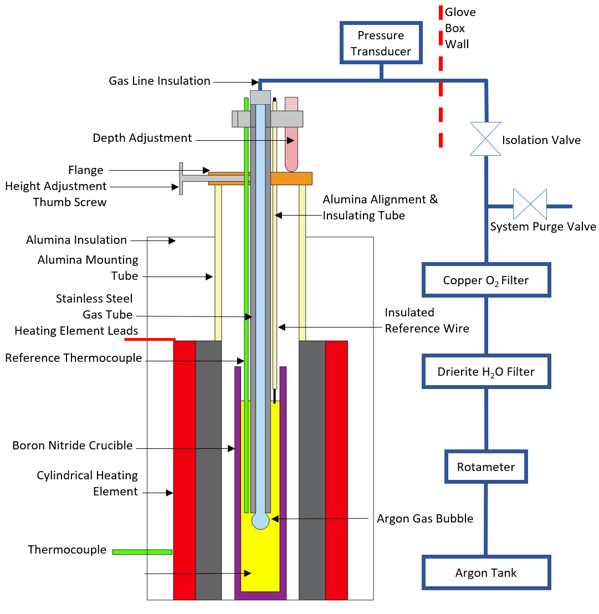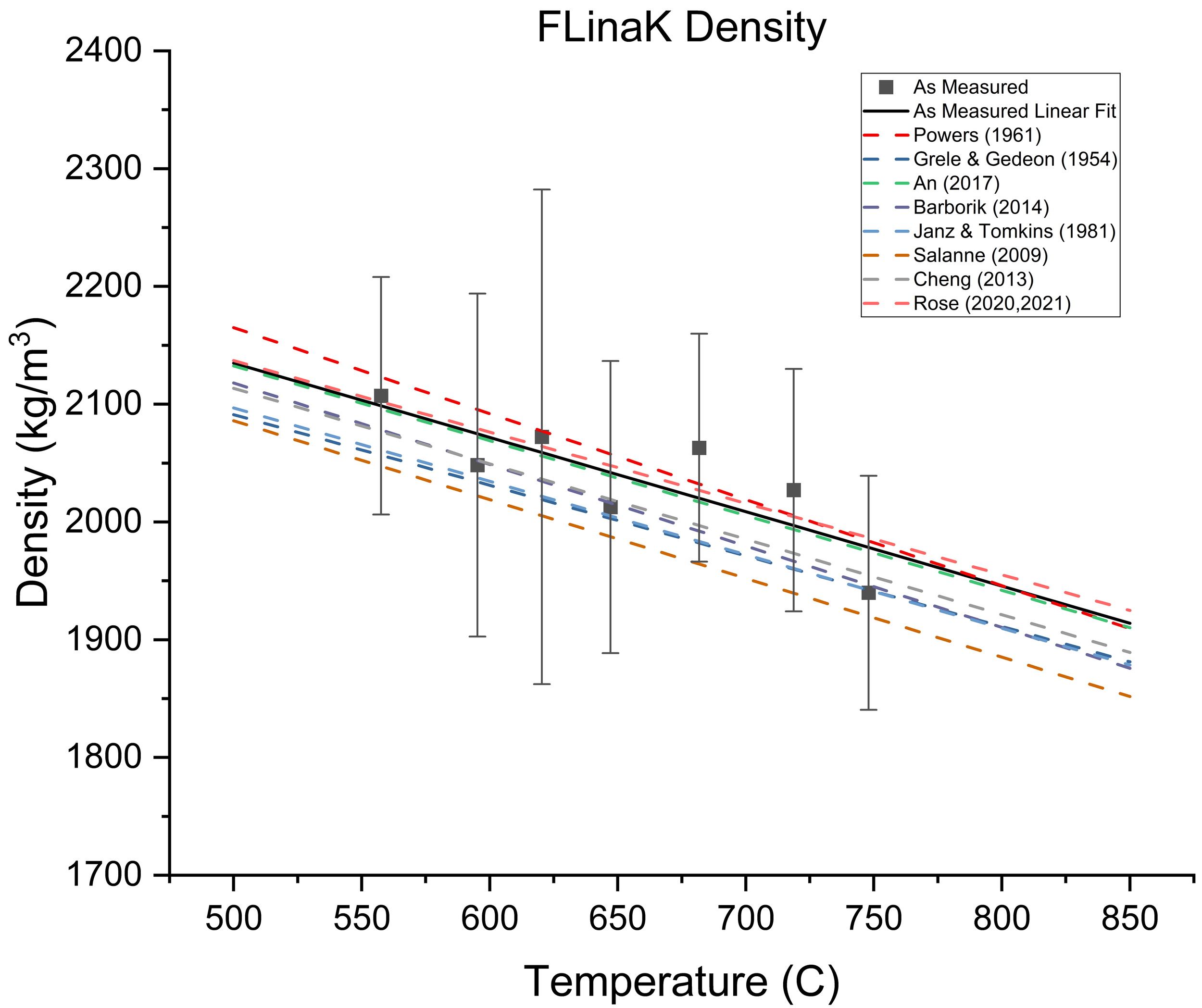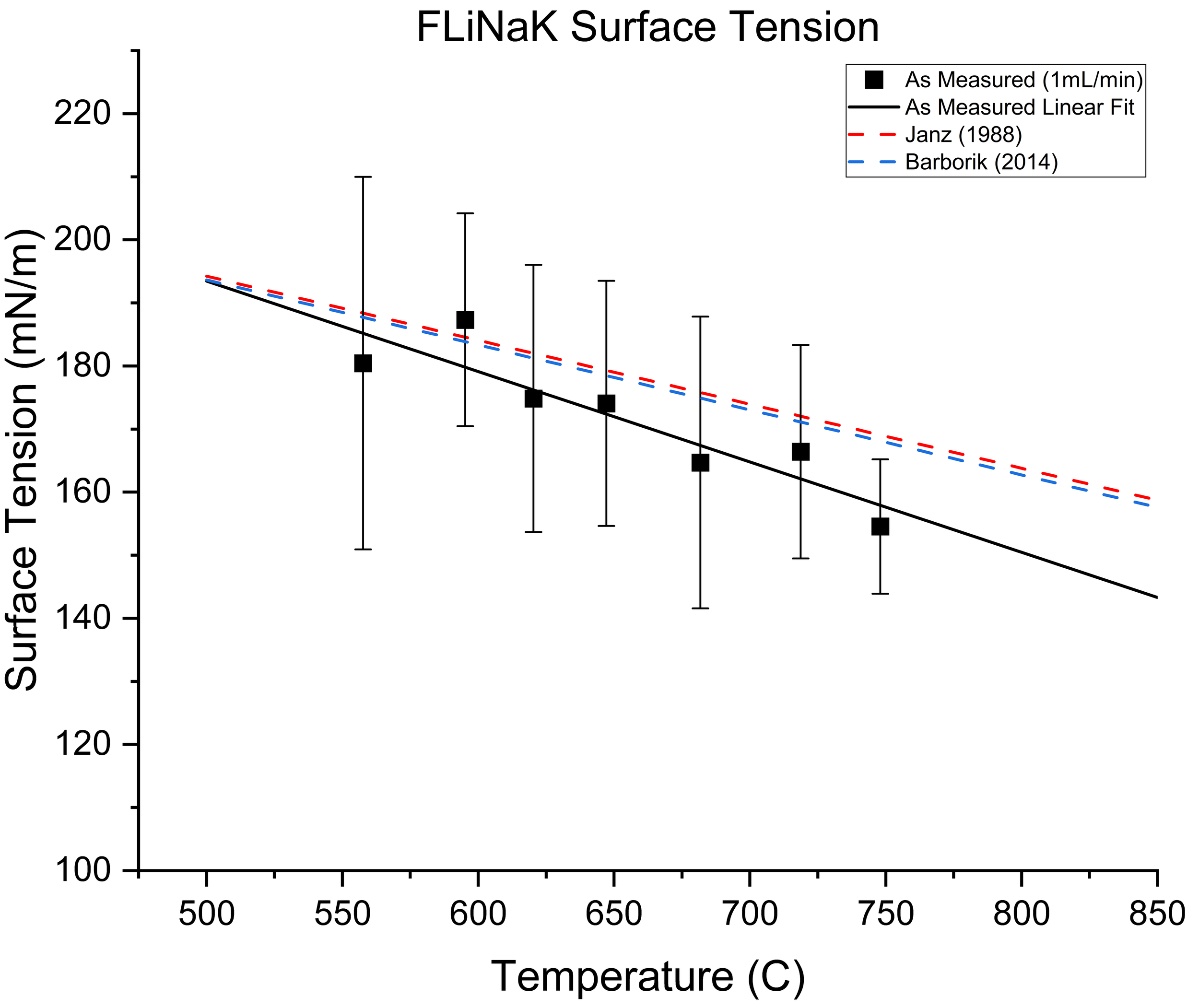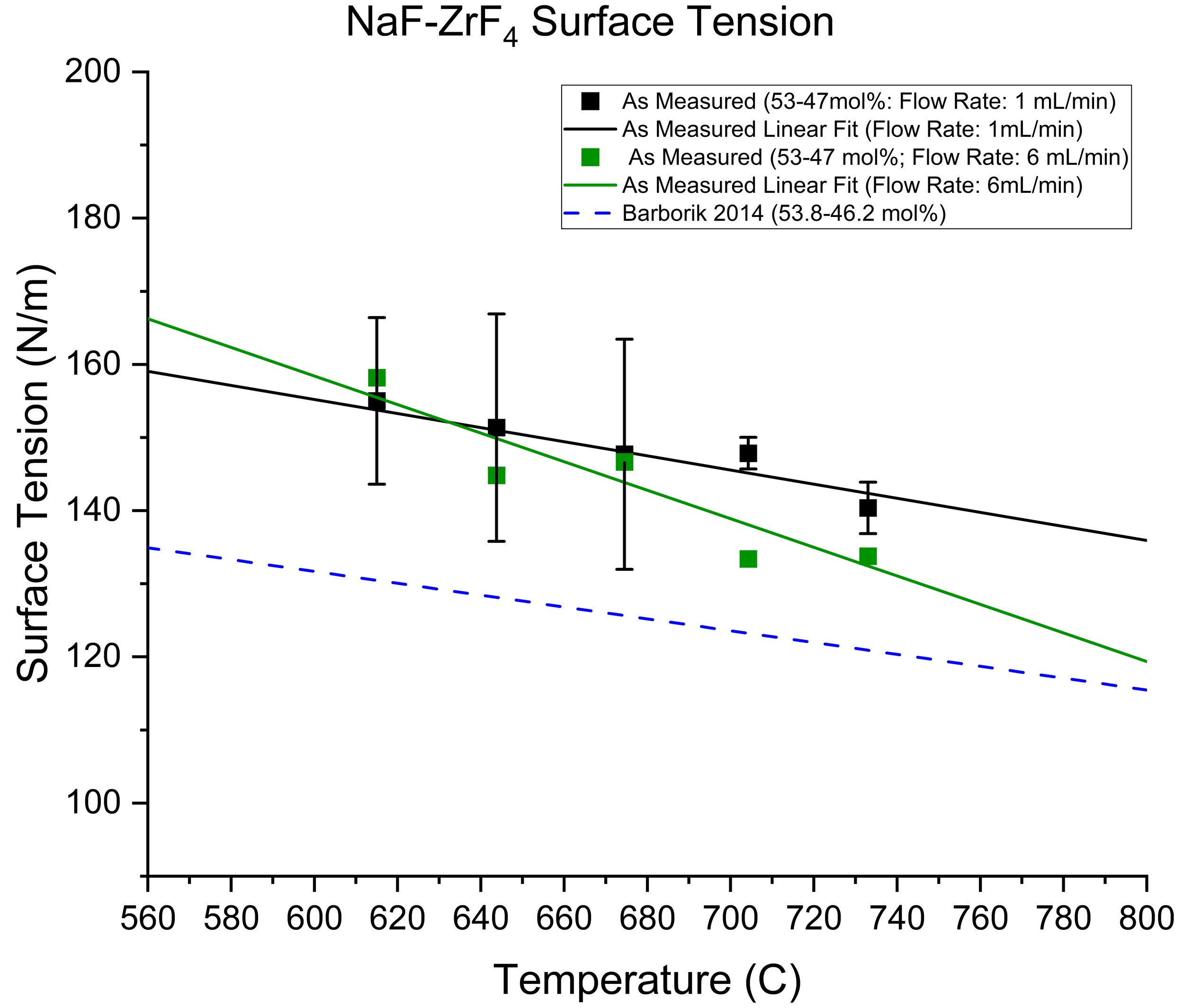Combined High Temperature Surface Tension and Density Measurements
Ph.D. Research Project
Explore the posibility of using the Maximum Bubble Pressure method for simultaneous Surface Tension and Density Measurements of molten salts.
Explore the posibility of using the Maximum Bubble Pressure method for simultaneous Surface Tension and Density Measurements of molten salts.
Overview
Most density and surface tension measurements have an interdependency between both properties.
Even so, typically measurements are made separately, with correction terms to account for other properties.
As such, error accumulates when one or the other is not properly accounted for. Due to the difficulties of
making these measurements with molten salts, few efforts have been made to measure them congruently.
This project aimed to tackle this issue by utilizing the maximum bubble pressure method. This method
is easily adapted for measuring both properties, and an experimental system was developed for high-temperature use with molten salts.
The components of the system are derived from former experiments at both room and high temperatures, with adaptations to accomidate with the Glove Box Furnace:
Bubbling tube positioning assembly with thermocouple and electrical reference wire for locating the surface of the fluid.
Low flow rate gas line control
Data acquisition and analysis
Room temperature validation experiments
Low flow rate gas line control
Data acquisition and analysis
Room temperature validation experiments

Bubbling Probe Assembly
The full assembly (After several uses) where the bubbling tube is attached
to a micro-screw for precice control when identifying the top surface of
the fluid. It is used by with the reference wire to complete an connection
between the tube, fluid and wire in order to judge when the tube touches the surface.
Micro-screw adjustable tube
Flange mounting assembly with alumina tube base
Electrical reference wire
Thermocouple that moves with the end of the bubbling tube for precise temperature measurements
Flange mounting assembly with alumina tube base
Electrical reference wire
Thermocouple that moves with the end of the bubbling tube for precise temperature measurements
![[Image Description Placeholder]](https://images.squarespace-cdn.com/content/67b8b1912b8c2e621e3c56ea/2a080883-02cd-4ad8-a73b-346e0b42a042/Bubbler.png?content-type=image%2Fpng)
Room Temperature Validation
The method was tested at room temperature using water. This was done to
check the bubble forming behavior was appropriately sphereical, and
to verify there was no interference from other components.
Average Density Error: 0.66% at 68C
Average Surface Tension Error: 2.52% at 68C
Clean repeatable bubble formation
Average Surface Tension Error: 2.52% at 68C
Clean repeatable bubble formation
![[Image Description Placeholder]](https://images.squarespace-cdn.com/content/67b8b1912b8c2e621e3c56ea/deec722a-1b27-4101-9a23-c32dd8b67065/Bubble+Frames.png?content-type=image%2Fpng)
High Temperature Density
Density is determined by the slope of the maximum bubble as a funciton of depth.
Measurements show agreement between former studies for both salts tested as a funciton of temperature.
Specifically with FLiNaK (considered a reference salt) the agreement is highest with studies (Rose, An, Barbork) where density and surface tension are considered together.
Reasonble but higer then desired error of up to 20%.
Strong agreement in trend with respect to temperature.
Strong agreement with magnitude with respect to temprature.
Strong agreement in trend with respect to temperature.
Strong agreement with magnitude with respect to temprature.


High Temperature Surface Tension
Surface tension measurements however show less agreement compared to density. This is
most likely because of interactions that occured at high temperature between the salt, gas and bubbling tube.
These interactions cause chemical instubiliites, and most likely effected maximum pressures. Another possiblity is the flow rate may have effected results, as seen in the NaF-ZrF4 surface tension plot.
Similar Magnitude to limited former studies
Similar error to density (20%)
Shows deviation, but this could also be associated with the joint density-surface tension method
Similar error to density (20%)
Shows deviation, but this could also be associated with the joint density-surface tension method

